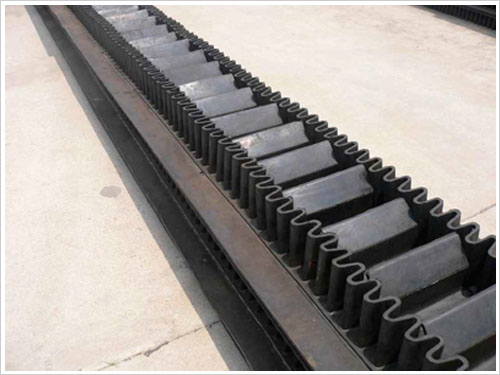Raised edge conveyor belt wedge

Guard conveyer belt and the use of advanced raw materials, adopts the unique manufacturing process, the guard, transverse diaphragm, baseband after vulcanization method combined into one. With just a soft, supple and have strong characteristics of falling not degum, do not; And anti-bending of tear resistance, novel structure. Have a combination of general penal conveyor belt transmission Angle is large, flexible Angle transformation, low power consumption, high efficiency, etc Raised edge conveyor belt wedge: Shape: there are on either side of belt body side of belt body does not meet higher wedge guard, guard 20-80 - mm height. Purpose: transport easily scattered powder, granulated and small lump materials. Product features: 1. The conveying material, dip to 90 °. 2. Bue, material not scattered. 3. Yi from horizontal to sloping, or from sloping to horizontal Angle transition and transformation. 4. The conveyor is compact, cover an area of an area small. Baseband requirements: Raised edge conveyor belt wedge requirement has a certain tensile strength and abrasion resistance. One free to leave the edge of the guard conveyor belt, in order to adapt to the requirement of Angle redirection, longitudinal requires flexibility of adhesive tape, lateral requires certain rigidity. Laizhou sincere rubber co., LTD., raised edge conveyor belt production of wedge with special structural lateral stiffness of the baseband, solve the large size belt with collapse phenomenon in the return process. The structure of the baseband: Raised edge conveyor belt wedge baseband is covered with covered in glue, the glue layer, core and lateral stiffness of four parts. Cover the rubber thickness on for 3-6 mm; Under cover the adhesive thickness 1.5 4.5 mm. Guard conveyor belt core materials under tension, the material can be cotton canvas (CC), nylon (NN), EP canvas (EP) or wire rope (ST). In order to increase the lateral stiffness of the baseband, the core body join special strengthening layer, called lateral stiffness layer. The width of the baseband specifications, same as the common adhesive tape, comply with the prescribed standards (GB/T7984-2001.

